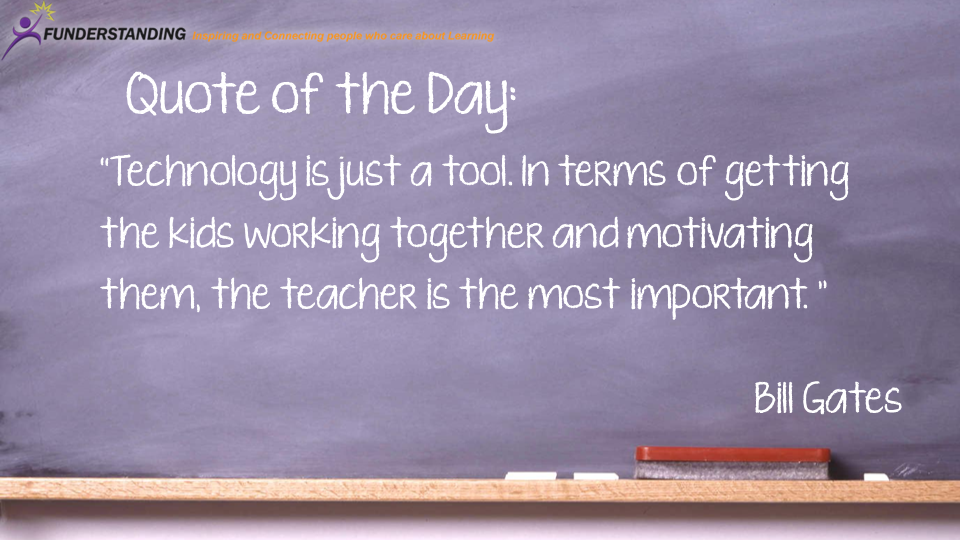So for the first question of this blog, we were supposed to watch the short video Mr. Dancealot. This video is about a dance teacher who attempts to teach a class by using only powerpoint and no involvement. When they get to the final exam, he expects them to dance. The poor students are so lost that they are just standing there reading notes. It is impossible to teach a hands on course without the students actually participating. The message behind this video is make sure your teaching objective and how you teach it is what's best for the students. You can't just "teach them so they don't have to learn" as Dr. Strange says. I completely agree with this message, because if the students do not participate then how do you expect them to learn!?
Our next assigned video comes from Mr. Kevin Robert's Teaching in the 21st Century. It is a video about how different the world is now with all the technology and informational resources our children have these days. Between Google, Twitter, Facebook, Wikipedia, and other sources, what is the job of a teacher these days? The argument Roberts makes is that it is the teacher's job to help the students learn to use these sites correctly and how to sounds halfway intelligent when they publish, post or comment. We are now the filter to the knowledge that students can obtain from the world wide web. He also states that these tools are not only used for entertainment, but they should be used for engaging the students in learning and getting them excited about learning. I agree with Roberts 100%, because the world we were brought up in has changed drastically. Students are using technology in every classroom, we have to help the students be safe online and to use it properly.
The third video is The Networked Student, a video whose name sums up the idea of the video. It sets a great example of how the internet can be used to help a student learn about their chosen profession or really any topic they choose. It is also a great way to get connected with potential colleagues, authors of papers/books and professors. During the video it asks the question, "So, why does the networked student even need a teacher?". They need us to show them how to set up this network, the correct way to connect with professionals and how to maintain the network to grow with them as they progress in their student and professional career. I think this video is a great watch for every potential teacher. It is a great insight into our roles as teachers in the 21st century.
In the video, Harness Your Students' Digital Smarts, Vicki Davis teachers her students to use the web to explore the world and open their minds to new experiences. She is also letting them teach the class, which gives them a change of pace and students will be proud of their accomplishments when they can look back on their work or day and say "I did that!". I love her ideas and the way she was involving the students completely in all her objectives and teachings.
Our fifth video we were assigned comes from our professor, Dr. Strange, and his visit to Gulf Shores Elementary School in Alabama. It's called, Who Is Ahead In The Learning Race?. It is absolutely amazing to see what these kindergarteners, first graders, second graders and third graders are accomplishing on their IPads and Mac Books. They are learning (and learning well), things that we as undergraduate students aren't even attempting yet. So to answer his questions, they are ahead by a landslide! These children are going to be fluent in the technology game by the time they reach 18 years of age. Which is a feat they should be proud of and will no doubt get them far in life considering how much technology has weaseled its way into every field. I am truly amazed at their accomplishments and commend them.
Last, but not least, is a new technique called "Flipping The Classroom". This technique is about the teacher recording a video lesson that the student watches the night before as homework and discusses the next morning in class. This is completely new to me and honestly I disagree with it. It has its advantages, but it also has its downsides. Advantages would be the students teaching themselves and hopefully retaining the lesson, and maybe even the time abundance in class the next day. But on the other hand, when the student has to teach themselves without proper instruction at that age, how can you be sure they are learning the proper technique and what about the children who get frustrated during their practice problems and give up. You aren't there to help them and build their confidence on that subject. Maybe they video lessons aren't that bad, but maybe it can be a precursor to the actual lesson so they can have some background knowledge before the lesson. But personally I will not be using this technique in my classroom unless the school I work for absolutely requires it.

Great post! Good job adding working links and a picture with alt and title modifiers.
ReplyDeleteNo Blog Post #3.
ReplyDelete